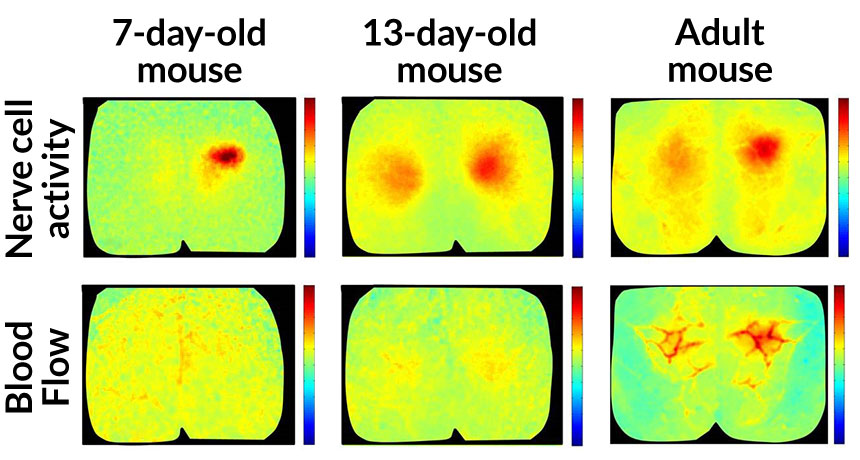Newborn brain has to learn how to feed itself
In infants, blood flow scans used for brain imaging may not reveal nerve activity, study suggests

MISS MATCH After paw stimulation, nerve cells in the brain of a 7-day-old mice become active (top row, left), but blood doesn’t show up (bottom row, left). A 13-day-old mouse has larger nerve cell responses (top row, middle), but still no blood — that doesn’t appear until adulthood (bottom row, right). Red signals higher nerve cell activity and blood flow.
Hillman Lab/Columbia University’s Mortimer B. Zuckerman Mind Brain Behavior Institute






